#these are characters with three unique lines of dialogue.
Explore tagged Tumblr posts
Text

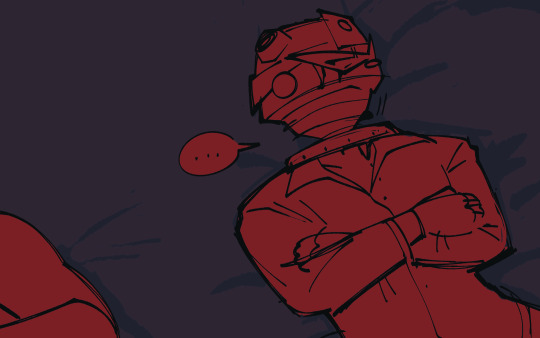


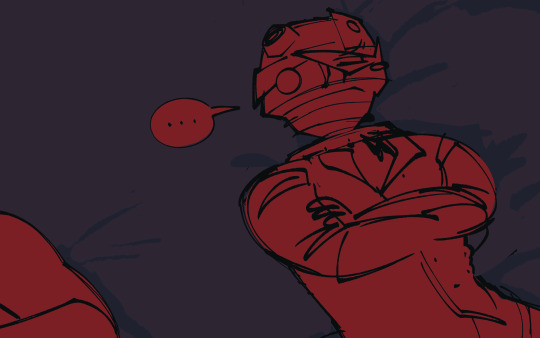

based on some writing i did
#fanart#toontown corporate clash#ttcc#doodles#buck wilde#director of land development#dold#desmond kerosene#derrick hand#overwhelming authority#these are characters with three unique lines of dialogue.#girlll you need a shot of b12#oilfield
206 notes
·
View notes
Text
Storyediting Questions to Ask
As You Read the First Draft:
Are there place that surprised you as you read your first draft? - Why do you suppose that is? - Is there material there you'd like to expand?
What are the character really doing in this story? - Might they have issues you haven't explored fully yet?
Look to the places that drag. - These might be scenes where you have avoided dealing with something deeper. - What are the characters really thinking in these places? - What are their passions, frustrations, and desires?
Imagine alternative plotlines. - How might your plot be different if ti headed off on another tangent from various points in the story? - You don't have to follow them, but they might suggest other streams that can flow into the main plot.
Think About Structure:
Does you story play out naturally in three acts?
Is there an immediate disturbance to the Lead's world?
Does the first doorway of no return occur before the one-fifth mark?
Are the stakes being raised sufficiently?
Does the second doorway of no return put the Lead on the path to the climax?
Does the rhythm of the sotyr match your intent? If this is an action novel, does the plot move relentlessly forward? If this is a character-driven novel, do the scenes delve deeply enough?
Are there strongly motivated characters?
Have coincidence been established?
Is something happeing immediately at the beginning? Did you establish a person in a setting with a problem, onfronted with change or threat?
Is the timeline logical?
Is the story too predictable in terms of sequence? Should it be rearranged?
About Your Lead Character:
Is the character memorable? Compelling? Enough to carry a reader all the way through the plot?
A lead character has to jump off the page. Does yours?
Does this character avoid cliches? Is he capable of surprising us?
What's unique about the character?
Is the character's objective strong enough?
How does the character grow over the course of the story?
How does the character demonstrate inner strength?
About Your Opposition:
Is your oppositing character interesting?
Is he fully realized, not just a cardboard cutout?
Is he justified (at least in his own mind) in his actions?
Is he believable?
Is he strong as or stronger than the Lead?
About Your Story's Adhesive Nature:
Is the conflcit between the Lead and opposition crucial for both?
Why can't they just walk away? What holds them together?
About Your Scene:
Are the big scenes big enough? Surprising enough? Can you make them more original, unanticipated, and draw them out for all they are worth?
Is there enough conflict in the scenes?
What is the least memorable scene? Cut it!
What else can be cut in order to move the story relentlessly forward?
Does the climactic scene come too fast (through a writer fatigue)? Can you make it more, write it for all it's worth?
Does we need a new minor subplot to build up a saggin midsection?
About Your Minor Characters:
What is their purpose in the plot?
Are they unique and colorful?
Polishing Questions:
Are you hooking the reader from the beginning?
Are suspenseful scenes drawn out for the ultimate tension?
Can any information be delayed? This creates tension in the reader, always a good thing.
Are there enough surprises?
Are character-reaction scenes deep and interesting?
Read chapter ending for read-on prompts
Are there places you can replace describing how a character feels with actions?
Do I use visual, sensory-laden words?
For a Dialogue Read-Through:
Dialogue is almost always strengthened by cutting words within the lines.
In dialogue, be fair to both sides. Don't give one character all the good lines.
Greate dialogue surprises the reader and creates tension. View it like a game, where the players are trying to outfox each other.
Can you get more conflict into dialogue, even emong allies?
If you like my blog, buy me a coffee☕ and find me on instagram! 📸
#writers and poets#writing#creative writing#poets and writers#writers on tumblr#creative writers#let's write#resources for writers#helping writers#writeblr#how to write#writerscommunity#writers#author#ao3 writer#writer community#female writers#writer#writer on tumblr#writer things#writer problems#writer stuff#writing inspiration#writing prompt#writing advice#writing community#on writing#writing tips#editing#question
2K notes
·
View notes
Text
Some Narinder character analysis for y’all.
This is a slightly re-edited excerpt from a much longer post of mine where I was specifically trying to provide a rebuttal to someone else. I’m kinda proud of some of my takes here and the write up took me hours so I’m gonna repost it here on its own.
I’m going into specifically into Narinder’s
Speech patterns and way of expressing emotions.
Implications of his post defeat dialogue
Relationship with Aym and Baal
Feelings on Ratau’s death
And a little extra on why do we “babygirl” Narinder
Full analysis under the cut.
The way Narinder expresses his positive feelings
First I gotta establish Narinder’s voice. Narinder seems almost incapable of giving a genuine compliment especially without turning it into something about himself.
Here’s three examples of him giving a complement to The Lamb. Taken from after defeating Amdusias and Shamura. He also complements The Lamb when you sacrifice Ratau but I’ll come back around to that.

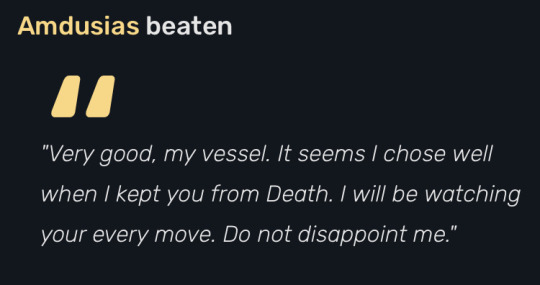
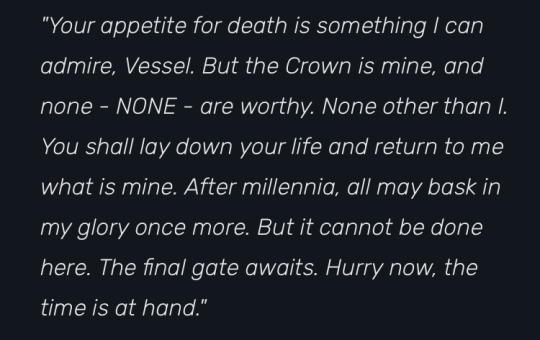
I wanted to grab the entire quotes so it didn’t look like I was nitpicking.
"Very good, my vessel. It seems I chose well when I kept you from Death.”
First example, “very good,” is the complement, but immediately after he takes credit for this by calling you “my vessel” thereby claiming ownership over you. His vessel did well. And again “I chose well” doubled down and complemented himself.
“I admit, you have worn it (the red crown) almost as well as I could have myself.”
Again we see the complement layered in ego. “Almost as well as I” in other words you did well, but don’t forget I’m better. Also important to draw attention to is “I admit” this is a very explicit statement of his refusal to acknowledge the success of others.
"Your appetite for death is something I can admire, Vessel. But the Crown is mine, and none - NONE - are worthy. None other than I.”
Here he almost lays down a complement. “Your appetite for death is something I can admire” straight up, states his admiration. He seems to almost realize what he’s done and quickly pulls back into his ego, “But the crown is mine” “-none are worthy- None other than I.”
These are the three of the four ONLY times that Narinder ever says anything explicitly positive about someone else when he is a god. Thus establishing that the head ass cannot give out a compliment to save his life. The one time he gives you full credit for your actions he immediately pulls right back into his ego.
I cannot stress this enough. Someone who is characterized as cold and emotionally closed off as Narinder is WILL NOT suddenly undo this characteristic when they try and express a positive feeling.
Okay with that established we can look at his follower dialogue. Specifically these two examples from when you resurrect a follower and allow him to go on a mission.
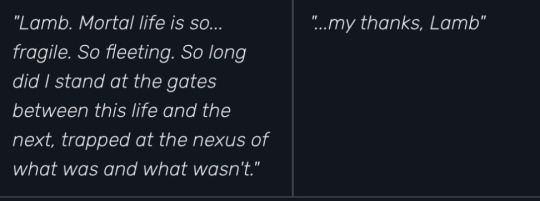

“I cannot begrudge supplantation by one such as yourself.”
Literally saying I don’t resent you for taking my place. It’s not an explicit statement that he respects you but this is he weird fucked up little way of saying it. Of course he still lays it out in a way that’s self centred but we know from the way he has spoken that this is about as much verbal praise he is capable of giving.
The other one is a less explicit statement but I think it’s a interesting reflection of the final place of his character.
“…my thanks, Lamb.”
Being his last bit of unique dialogue, it’s an incredible ending to a character. He thanks you. That’s all he needed to say.
Narinder’s reaction to his defeat that he would rather die.
Let’s go over his dialogue in some depth.

"You weak, snivelling, foul thing. You - wait! Waaaiiiiiit!"
I’m starting with this line as it compels me the most. I find that there are two separate readings of this and I can’t really point to one above the other. On my play through I had assumed his wailing was more in reference to being denied death. It could also be read as him not wanting to be reduced to a follower and realizing what your mercy really means for his future.
“-are you to be a vengeful false idol, or a merciful coward? No longer can you blame your vile acts on me."
Okay, looking at the way he presents your two options he seems to push more for the murder action. “-vengeful false idol,” is how he refers to murder. It’s not exactly a glowing review but his use of the word vengeful is important. We know that one of Narinder’s main goals in the game is revenge, we he already acts with revenge I can’t say that he’s using this word as an insult. The false idol part of this statement seems like he’s attempted to separate himself from you, again for is ego.
Then he presents the spare option by calling you a “merciful coward.” The flow of this full sentence puts more pressure on this option. He presents it as the “or” the second option. This is the bad option, the option of a coward.
“So. vou are no different to me after all. You have become as I am."
I know this is a deranged order to go over these quotes but last we got murder. Compared to his spare dialogue this is incredibly sombre. We know from already establishing how big his ego is that saying you are the same as him is almost a compliment. I do find this dialogue incredibly interesting tho, I can’t exactly explain why but I can’t help but read this as damning as well. It’s like he means it in both ways, the ultimate fuck you. You are just as I am, for better and worse.
But from what we know about Narinder his edgy ass cannot express emotion. He wraps his statements in layers of irony and selfishness. Unless it supports the persona he puts on or inflates his ego he WILL NOT right out state his feelings or needs, especially when he was a chained god.
Relationship with Aym and Baal
Aym and Baal are incredibly hard to characterize. They don’t have much dialogue to work off of and only three characters every speak on them, Shamura, Narinder and Forneus. The context of the game does present them as more Narinder’s first (and second) hand, less followers more apprentices, almost, but where’s the fun in assuming.


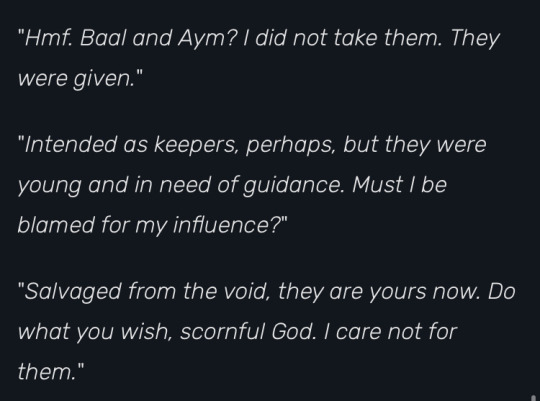
"Intended as keepers, perhaps, but they were young and in need of guidance. Must I be blamed for my influence?"
I wanna draw attention to the specific wording of keepers. Again, based on the way Narinder speaks its safe to assume he means the formal meaning of a keeper, meaning a caretaker. It is unclear if Narinder was told they where his keepers or if he assumed so, but either way he still speaks on them as such.
For the sake of argument (and I don’t wanna rewrite this bit entirely) I’m gonna put the idea that Narinder brainwashed Aym and Baal against my presented idea of them being his keepers or apprentices.
The proposed idea of the brainwashing angle can be developed based on Narinder saying that “they where young and in need of guidance, must I be blamed for my influence.” This implies that, as much as Aym and Baal may have been sent as keepers, they where still young and Narinder could not help but be an influence on them. I am gonna come back around to this thread so hold onto this for a moment. Moving on.
“Two kits I did have, true love found! And yet one lackadaisy summer day, my beautiful children were taken away... a gift, they said, for the one they loved most, the one that waits...”
“Ooh, kits... I remember, I remember... two kits in my claws... a gift.."
It is unclear and morally dubious how Aym and Baal came to Narinder. First we’re not 100% where Narinder is chained. The wiki lists it as the afterlife and in dialogue Narinder refers to it as “at the gates between this life and the next, trapped at the nexus of what was and what wasn't.” (When he asks you to send him on a mission.) We can travel there both by dying and being summoned there by him.
Either way the assumption is that Aym and Baal had to die. (As an aside I have my own speculation on the conditions required for a person to be presented to Narinder or to be resurrected but that’s off topic.) The horrific implications being that either Shamura themself killed the kits or that they where already dying. However you cannot blame the reaper for ushering the dead away from life.
I’m going to work off of the cult specific definition and characteristics of brainwashing. It’s hard to characterize where Aym and Baal sit here as, again they have little dialogue and due to the nature of brainwashing it’s hard to spot. First I wanna grab my brainwashing resources.
I’m using Encyclopedia Britannica’s page on brainwashing, cults, indoctrination, manipulation as my primary resourse.
Again I kinda wanna apply a layer of irony to how literally I apply real life tragedy to this game that obviously uses cults in a comedic manner. I wanna focus in on the characteristics displayed by victims of brainwashing and the techniques used in brainwashing by an abuser.
Looking at the elements used in brainwashing the only one I can say off the bat that is present is isolation, obviously. But with that let’s grab all of Aym and Baal’s dialogue.

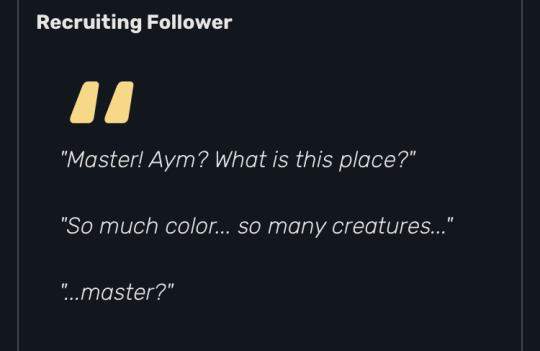
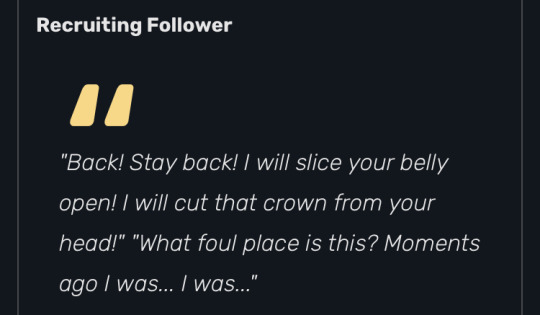
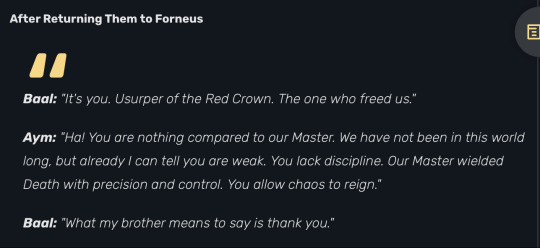
What is clear from their dialogue is their obedience to Narinder. They call him master while his keepers and still when you meet them later when adventuring. And physically we do see them by Narinder’s side the entire main game and they fight the Lamb first. But if we add some nuance and look at their role as keepers or my own theory of being apprentices both actions of obedience make sense still for those roles. On the same note they also don’t display traits you would expect for someone fully under Narinder’s control. They speak to the Lamb out of turn and attack without prompting from Narinder.
Other characteristics are hard to imply. With torture I do want to pass it off an unlikely as based on the way Narinder tries to manipulate the Lamb it’s only verbal and he cannot attack while chained and I don’t see that changing with the keepers. Traits like sleep, water and food deprivation can’t be applied for various reasons (mostly the being dead one) and we don’t know anything about Narinder and the keeper’s interactions in the past so I’ll have to disregard other traits like suggestion.
Baal: "It's you. Usurper of the Red Crown. The one who freed us."
Aym: "Ha! You are nothing compared to our Master. We have not been in this world long, but already I can tell you are weak. You lack discipline. Our Master wielded Death with precision and control. You allow chaos to reign."
Baal: "What my brother means to say is thank you."
Moving onto groupthink I can pretty comfortably say that this is not a present characteristic of Aym and Baal. In their limited dialogue we can easily characterize Aym as more outwardly defensive of Narinder but Baal is more reserved and even contradicts Aym and is able to speak freely of Narinder.
Looping back around to the way Narinder speaks on his influence on Aym and Baal. Again we know how Narinder speaks, he cannot give honest compliments and dodges affection like it’s a professional sport. With the way he will outright tell the Lamb to manipulate followers and then uses the words “guidance” and “influence” about Aym and Baal, he has to be avoiding admitting affection to the keepers. He does follow that up with “Do what you wish, scornful God. I care not for them.” But again does Forneus not also allow her kits to do as they wish?
My own reading of Narinder’s relation to Aym and Baal is that of mentorship but it could also be read as parental. But saying brainwashed is a big stretch.
His feelings on the death of Ratau
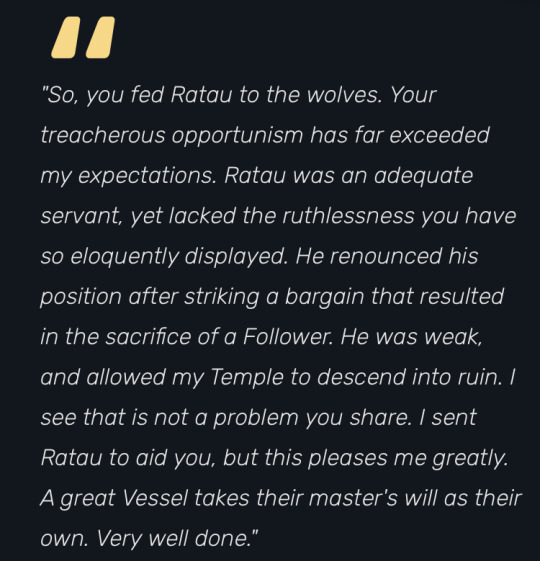
This is like another example of like, yeah, wow, an evil character does evil? Who could’ve possibly foreseen this? Sarcasm aside I do see his comments on this being a lesser evil.
First I do have to ask why, if Narinder held strong sense of unrest against his former vessel, did he not have him struck down? The main reason I can see is that Ratau is still devoted to the red crown, most clearly seen by the statue at the lonely shack which generates devotion.
Second, Ratau’s death isn’t on his hands, it’s on yours. I find his pride here is from The Lamb’s actions not the death of Ratau. You killed your mentor, he describes your actions as “treacherous opportunism” and says “A great Vessel takes their master's will as their own.” Based on his later dialogue this is likely more foreshadowing the Lamb becoming as Narinder is. Narinder tried to kill his siblings, and you did kill your mentor. “You have become as I am."
I’m gonna tangent quickly cause there’s a line here that is incredibly interesting.
"He renounced his position after striking a bargain that resulted in the sacrifice of a Follower. He was weak."
Incredibly interesting the way he condemns Ratau’s sacrifice of a follower. Narinder directly contradicts himself. It is implied that the follower was lost to another being that did not benefit Narinder, but the Lamb also sacrifices followers to the Fox and Midas. Just something to chew on.
Why do we “babygirl” Narinder and other evil characters?
This is kinda the last bit I’m gonna get into before I cap this off. It is incredibly funny for me to say “I babygirl Narinder” only to get a reply that’s like “I don’t think you babygirl him on purpose.” But I wanna talk about why this happens and why it happened to specifically Narinder.
When people complain about the fandom interpretation of Narinder I think they forget the tone of cult of the lamb. The closest thing I could think to call it would be a dark comedy kinda energy.
The game has very dark themes going on. Mentions of real horrible things like genocide, cults and religious abuse. But also just like look at the game, it’s visual style is so cute and non threatening, the bird characters have two mouths to commit to the bit. If you look at the way it depicts cults it’s very surface level, it’s more focused on being a satire on the common satanic media kinda look of a cult. Visually it bathes in its aesthetics, taking names from books like The Lessee Key of Solomon, uses villainous depictions of symbols like the pentagram or old Hebrew script, disregarding its nuanced origins.
And then they go onto do the funniest thing ever. The other bishop’s? Gross little freaks, based on commonly disliked animals, worm, frog, squid and spider. And then- and then they make the god of death, who they characterize and manipulative and evil, they make him a catboy. You cannot tell me they did not know what they where doing.
Why have I shot Narinder with the babygirl beam? CAUSE THE GAME DID IT FIRST!
I’m gonna call the god of death my little meow meow and point out his status as a Tumblr sexy man cause he’s a little guy and I wanna give him head scritches. But I’m also gonna call him a layered, fucked up and an incredibly interesting character in the same breath.
#my post#cotl#cult of the lamb#cotl narinder#cult of the lamb narinder#cotl the one who waits#cult of the lamb the one who waits#character analysis#Malachi Why?
747 notes
·
View notes
Text
It's said that the only way to access Mhin's red choice is by choosing the Alchemist background, and that fact alone has me thinking about how the origin stories will actually impact the course of the game at full release. I wouldn't assume that you have to choose a certain origin to get a "good" or "bad" ending for a specific character, but (as stated by RSS directly) different origin stories will allow the main character to connect differently with each of the main five love interests.
Obviously, this isn't revolutionary, but I wanted to touch on which origins I think will be best suited for each route, based solely on scraps from the demo lol
For Kuras, I think the Alchemist and the Unnamed suit him the best. The former really comes from the fact that Ais' relationship chart suggests Kuras likes to ramble about alchemy, and because it has a lot to do with his role as a doctor, I would assume it opens up a lot of opportunities for him to connect with the Alchemist MC. I am more convinced of the latter based on the actual content of the demo. If you played the Unnamed origin, you may remember when the MC states that something about Kuras "nags" at them, "like a half-formed memory". This small line can obviously allude to Kuras not being human (and the Unnamed MC can pick up on it because of their sensitivity to the supernatural), or it could also imply that maybe this background gives the MC and Kuras a deeper sort of association with one another. I also encourage you to consider the dynamic of an excommunicated oracle in love with an excommunicated divine eldritch being.
It shocks no one that the Alchemist is probably the best route for Leander, and I maybe want to say the Hound could possibly be a good option in the future. The Alchemist can pinpoint exactly what about Leander's magic abilities makes him powerful, and obviously, this mutual connection will probably allow for plenty of unique interactions in his route. Sit on the fact that the MC had been mentored (manipulated) by an ex-Senobium mage, only to fall right back into the hands of another (pseudo-Senobium-affiliated) mage with sketchy intentions and big secrets... hmmm interestinggg... As for the Hound, I realize (admittedly upon limited playthroughs with this origin), that the dialogue never really changes for Leander's scenes. However, he is still an enigmatic socialite running a cult-gang, so surely the Hound will have some unique thoughts on Leander in his route and may eventually be able to see through this "nice guy" facade that Vere is so insistent he's parading around with? Just a thought.
As for my thoughts on Vere, I somehow have many and none at the same time. The one I'm pretty certain about is the Alchemist because they have unique dialogue acknowledging that Vere's collar is enchanted. I think the Hound may also work with his route, but I'm only basing that on the unique dialogue after the first encounter with Vere, wondering how he managed to pickpocket them without a sign, tell, or slip-up. The Hound has good social intuition, which is at least somewhat useful in dealing with Vere and his contradictory personality.
Ais comes naturally to the Unnamed, having an abundance of unique lines towards him more than the other characters. Not only does the Unnamed MC feel uneasy and hear unnatural sounds leading up to the Seaspring, but they also are the only one out of the three origins who has a distinct connection to "groupminds". The main character also notes that his tattoo (relating to Ocudeus) almost looks like it's moving. Similarly to Kuras, I like to think of the dynamic between a runaway ex-oracle crossing paths with a demonic being with cult-like worshipers... I predict the Hound will also suit Ais' route, based on how extensive their unique dialogue of Ais' natural leadership skills is. This origin is also the only one that actually details why his "gang leader" status contradicting the lack of an actual gang is so strange. The Hound comes from a more directly rugged life, and Ais takes an interest in the MC being feisty and defiant, so I'd guess that'll come into play somehow.
Back to square one on this whole overexplained talking point, Mhin obviously has some special connection to the Alchemist (or vice versa), if it wasn't obvious by the fact that Mhin's only red choice in the demo so far is only available with the Alchemist background. I think the Alchemist's unique connection to the Senobium through their mentor may come up, as Mhin's bio page says that they like the Senobium. The bio page also says they enjoy conducting alchemical experiments, which will connect the two even more. Once again, I think the Hound will also suit Mhin's route, based on little evidence and mostly just because Mhin and the Hound have similar vibes.
All of that said, I want to reiterate that I'm not under the impression that one origin will give you better or worse endings than the others, but rather unique choices and extra details based on their strengths. Regardless of how well one origin pairs with a LI, I will still probably be playing through each route with my own biased favorite (the Unnamed, if you were curious (I know you were not)). At the end of the day, it allows us to replay the game over and over to see what special changes and choices are available, so that will be very exciting.
#touchstarved game#touchstarved#touchstarved kuras#touchstarved leander#touchstarved vere#touchstarved ais#touchstarved mhin
208 notes
·
View notes
Text
¡Shidou’s hcs and character analysis!
tw// childhood trauma, violence, reference to possible SA in his past, my writing cause I didn’t proffered this
PHYSICAL TOUCH!! Friends, lovers or even just acquaintances, he has the bad habit of seeking touch, small or big doesn’t matter. From shoving to fidgeting. It’s different obviously base on the relationship you have with him. Are you two friends? Expect playful shoves, ruffling each other’s hair, if sat together legs or shoulders will touch casually. He is the type of person to laugh and slap your shoulder while laughing.
If you two are lovers: hand holding (he does that thing of rubbing his thumb on the back of your hand), kisses, hair ruffling, legs intertwined, hugs from the back, nibbling/biting. Pressing his forehead against yours. SQUEEZES. Especially if you have more fat on you, he would *love* it. The need to hold you close and squish your rolls or chub.
I personally see him as unlabelled. I know a lot like to hc him as gay. And it does make sense, but one can flirt with guys and it doesn’t erase the possibility of being into women too. That said, I do believe he has a preference for guys, especially aesthetically, but ultimately his choice of a partner would be base on mental compatibility and aesthetic attraction, no gender. I feel he is into someone who truly enjoys being their true self and doesn’t conform to society norms, more on this in a sec.
He is complex, as we see glimpses of this in the “egoist bible” and during his internal dialogue (like in the U20 arc). I don’t think he would be a bad boyfriend, but neither would he be perfect. Objectively speaking, he does have a rough, almost explosive side. But that’s a side he brings onto the football field. How he is outside of football we don’t really know. He is shown to be someone who values uniques, and also strength, complimenting other players strengths. He is not a demon, he just so happens to be a human with a deep complex personality. He seems to value peace in his life outside of football, which is something you don’t expect from him. Because he gets presented as this brute individual and yet he is the same who pops out this answers: “What made you cry recently?” At the end of the day when I become nothing, tears come out.
“What will you do on your last day on earth” Watch it as it reaches its end
“How would you spend your day off?” Be free from everything and become nothing
His answers are, intense, are they not? Which leads me to several thoughts. 1) He is very lonely. Using humour and anger to defend himself, a common trait of children who were abused, neglected in their childhood.
2) base on this, I feel in a relationship he would enjoy someone who has similar vibes to him but ultimately is different. Someone he can be chaotic with, someone he can laugh as loud as he wants, someone with who he can gossip and still have deep conversations at the same time. Ultimately, an artistic partner would be the best. Not only because he is into art, mostly as a way to cool down and shut down his brain, but because an artist or even a writer can see the world under different shades of colours rather than in greyscale. Classical introverted x extrovert duo, with the exception that the introvert individual becomes as extrovert as him when they are alone. His partner is his ancor. He will need to feel at peace from the turmoil inside of him.
3)his home life was not the happy kind. Now, this has been long speculated and I will give my 50 cents on the matter. Let’s analyse his favourite movie, manga and song:
Music > hide. Especially "Pink Spider"
Movie > "A Clockwork Orange"
Manga > "Chainsawman"
On the base line all three explore the darker sides of humanity, the need for personal freedom, and the consequences of defying societal norms. They create a raw and intense narrative about self-destruction, survival, and transformation.
But if we dive deeper > the movie mainly depicts SA, it’s a twist mix of violence, societal injustices and lack of free will… “Chainsaw man” it’s all about violence, power imbalance and manipulation. Denji was a tool from the start to end (again, lack of free will). The song, explored themes of internal chaos, the darkness in humanity, destruction and emotional turbulence and the psychological tool that that violence and abuse leaves on people. I mean… can it be any more obvious? His whole character is shown to be this brute, rude, violent individual but slowly we are being feed details into his insight. Like how deeply philosophical he is, artistic and yet he is genuinely over sexualised. Maybe is a reach, but I don’t think that movie, the song and the manga choice are casual. They are a mirror image into the possibility that his childhood was pretty much terrible. That his sexual comments, which come off as almost distasteful, and feel icky in a way, are a projection of what he went through. Trying to use a distorted sense of humour and the violence he grew up with, to shield himself from what’s his personal life and past.
Like when he was locked up, his reaction was intense. He was close to begging to be set free. Again— lack of freedom, he hates not being able to be free. Something could have been taken away from him in the past. Maybe is as simple as a culture thing— as we know Japan is a rather modest country with certain unspoken rules. Its traditional outlook on things such as gender and sexuality are the total opposite of Shidou’s persona. His appearance is loud, his personality is loud and it alls screams “look at me I’m here” and yet at the end of the day he is still a lonely being.
I recently reread the U20 chapter where he enters on the field. His inner monologue he uses biology (specifically fertilization) as an analogy to scoring. Many people interpret it as him making a connection to sex, but for me, it didn’t read as such. Maybe it’s my literature student nerd ass, but, I took from his inner monologue a sense of need in terms of leaving a mark onto this world. He speaks how art leaves a mark, so does books, buildings and obviously children, showing the family legacy. Proof that something existed before them.
Shidou feels that his legacy, his needs, are validated through scoring. He feels seen, people are cheering. He is leaving a mark. Which ultimately could be validating a lack of emotional attention he received when he was a child. To me, all of these references and the constant sexual innuendos are a meaning for something deeper. We saw how each character with a heavy backstory has a trait or something in them that screams “something is not right”. Like Rin’s personality being a result of what happened between him and Sae. Can’t think of anything else to add, maybe I will add something later. If you have any opinions, I am more than willing to read them!! Feel free to reblog/comment :))
#Glamourscatwriting#blue lock#shidou ryusei#shidou x reader#blue lock shidou#bllk shidou#shidou headcanons#character analysis#character angst#blue lock headcanons#bl Shidou#headcannons#my headcanons#anime and manga#blue lock manga
139 notes
·
View notes
Text
Really tired of streaming services making absolute banger animated TV shows for adults, never advertising them, then canceling then because no one watches them, so I'm taking it upon myself to share some of the ones I've watched recently with the hope other people will hear about them for the first time and give them a shot.
---
Blue Eye Samurai
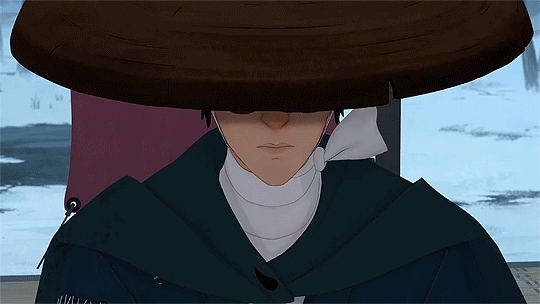
"A master of the sword lives life in disguise while seeking revenge in Edo-period Japan."
Probably one of my favorite animated shows of all time. Mizu, arguably one of the best sword masters in this time period, goes on a quest to eliminate four white men living in Japan, one of which is Mizu's father. The show focuses heavily on how factors outside of your control, such as race and gender, impact how others view you and how you view yourself.
Watch if you are a fan of: Complicated characters/relationships, revenge quests, gore, complicated relationships with gender and race, and absolute badass characters.
Where to Watch: Netflix
Undone
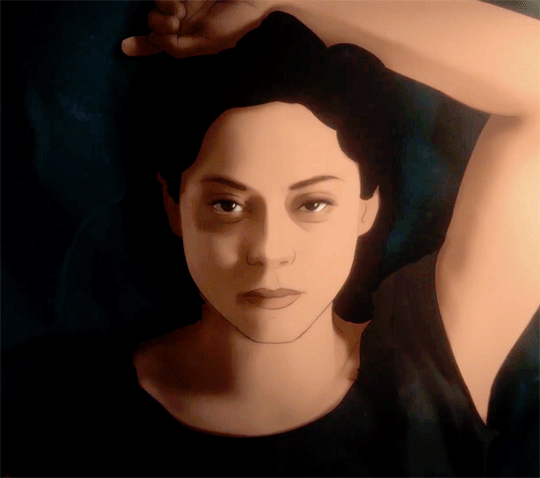
"After 28-year-old Alma nearly dies in a car accident, she finds that she has a new relationship with time; she develops this newfound relationship to find out the truth about her father's death."
Undone focuses on difficult relationships with family, including how your parents can have profound effects on you even after they're gone, and how to deal with grief. That, plus the added chaos of being able to travel through time.
Watch if you are a fan of: character studies, shows dealing with grief, time travel, trying to rewrite fate.
Where to watch: Prime
Scavengers Reign

"The crew of a damaged deep space freighter are stranded on a beautiful but dangerous planet."
A mix between sci-fi and horror, this show focuses on the crew of a crashed spaceship. Each (living) crew member of the ship escaped in pods, scattering them across the planet. They must fight to survive and make their way back to their ship on a planet featuring some of the most fucked up creatures I've ever seen.
Watch if you like: sci-fi, isolationist horror, body horror, creature features
Where to watch: At the moment, Max. As of May 31st, Netflix. Max canceled the show (even though it has a 100% rating 🙃). Netflix may make a season 2 depending on how many people watch it in the first few weeks after it comes to Netflix.
Harley Quinn
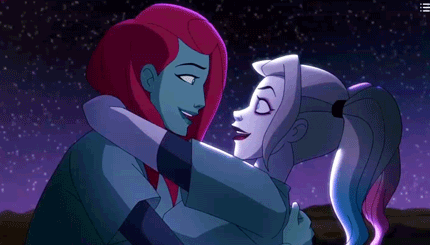
"The newly single Harley Quinn sets off to make it on her own as the criminal queenpin in Gotham City."
Honestly I was feeling a bit burnt out on super hero shows, but this one felt like a breath of fresh air. It follows Harley as steps out from the shadow of the Joker, no longer being one of his henchmen and struggling to find her identity as a single, independent villain.
Watch if you like: Superhero/villain shows, stories that focus on blurred lines instead of a clear distinction between good and evil.
Where to Watch: Max
Primal
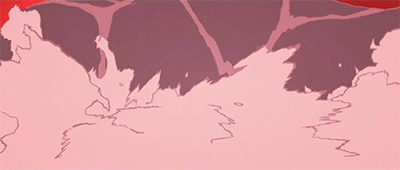
"At the dawn of evolution, a caveman and a dinosaur on the brink of extinction bond over unfortunate tragedies and become each other's only hope of survival in a treacherous world."
This show is super unique in that there's basically no dialogue, but it still finds a way to display an absolutely gutwrenching relationship between two parents of different species going through shared grief.
Watch if you like: Brutality, heavily visual story telling, prehistoric stories, and tales of overcoming.
Where to Watch: Hulu
Love Death and Robots

"This collection of animated short stories spans several genres, including science fiction, fantasy, horror and comedy. World-class animation creators bring captivating stories to life in the form of a unique and visceral viewing experience. The animated anthology series includes tales that explore alternate histories, life for robots in a post-apocalyptic city and a plot for world domination by super-intelligent yogurt."
I love this show because you never have any clue what to expect. A siren living in a river falling for a deaf knight? An artist painting intergalactic art pieces? Three robots going on a field trip through the apocalypse to visit old human historical sites? You never know, but there's going to be love, death, and/or robots in it. Each episode varies wildly, so I'd recommend watching at least a few to get a taste for it, as some will resonate more strongly than others.
---
I'm sure there are lots more excellent animated shows, but these are all the ones I've watched in the past year or so. I'd love to see more recs in the tags, because I'm always down to watch more cool animations!
#i just want these shows to get the attention they deserve#animation#tv#personal#the life of an audio engineer#tv recs
250 notes
·
View notes
Text
Director 永岡 智佳 Chika Nagaoka talks about the Detective Conan movie 27 : The Million-dollar Pentagram


When I was approached to direct this movie, it had already been decided that Kaito Kid and Heiji Hattori would be the main characters. During a meeting that included Gosho Aoyama-sensei, we discussed possible settings. Since Kid’s last feature was set in Singapore, we wanted a location with equally breathtaking nightscapes. Kobe came up as a possibility, but since the Kansai region has already been featured quite extensively, we decided, ��Let’s go with Hakodate!’ That’s how the setting was finalized.
The Detective Conan movies find a balance between three key elements : action, mystery-solving, and romantic comedy. The movie puts special emphasis on the romantic comedy aspect. What’s fascinating about that is how small details can convey emotion. For example, a subtle nuance, a single line on an eyebrow or the curve of an eye, can drastically change an expression. A glance or even a slight movement of the fingers can express something profound. That’s the charm of crafting romantic comedy moments. On the other hand, action scenes are the complete opposite. The focus is entirely on cool, dynamic movement. Timing and pacing are everything, and when those align perfectly, it create an exciting scene.
The cases in Conan have gotten increasingly complex over the years. Honestly, I can’t fully grasp the script on my first read through (laughs). But while we might find ourselves going, ‘Huh?’, Conan’s brilliant mind races ahead. To ensure the audience doesn’t feel left behind, we added "visual storytelling". For instance, when Kid mentions ‘six swords,’ rather than relying solely on dialogue, we included a scene where Kid uses his signature magic to produce six swords. Such clear visual cues are crucial in a Conan movies, especially since the movies are enjoyed by younger audiences too.
Kaito Kid shines in this movie, embodying elegance and charm with his striking lines and graceful movements, all while carrying a hint of mischief (laughs). Aoyama-sensei trusted me with Kid’s portrayal, giving me freedom to explore. For Heiji, Aoyama-sensei supervised his Kansai dialect and occasionally adjusted his expressions. My initial depictions of Heiji sometimes leaned too mature, but with his guidance, Heiji came to embody the quintessential teenage high schooler. It was a valuable learning experience.
There’s also a small gesture involving Aoko that Aoyama-sensei appreciated. Later, he told me, ‘I’ll incorporate that depiction into the resumed serialization of Magic Kaito starting in April,’ which made me incredibly happy.
Detective Conan has a long history, and many veterans who’ve been involved from the beginning are still contributing to the series. At the same time, younger generations are joining the team. This blend of fresh talent and seasoned experts creates the depth unique to Conan. When I joined about ten years ago, I learned so much from my seniors, who helped shape my approach. Now, as a senior myself, I try to give back by sharing insights, such as, ‘If it were me, I’d do it this way,’ or, ‘If you approach it like this, you could achieve that.’ That cycle of growth and mentorship has allowed the Conan animation to continue evolving.
This sense of “passing the baton” is also evident in the voice acting sessions. Minami Takayama-san’s leadership as Conan’s voice actor is truly remarkable. Her sharp questions and constant flow of ideas help refine the work. The voice acting team for Conan is genuinely outstanding.
I heard that the guest voice actor Yo Oizumi had experience in the voice acting industry, but his performance exceeded my expectations. While listening to him in the booth, I found myself nodding repeatedly, thinking, ‘He really gets it!’ He also gave invaluable advice on Hokkaido dialect nuances, for which I’m deeply grateful.
Fans might be wondering, ‘Will Heiji and Kazuha finally…?’ That sense of anticipation or frustration whether it’s resolved or not is something you’ll have to see for yourself. I hope viewers will empathize with Ran-chan’s perspective this time, as she supports Heiji and Kazuha’s relationship. Her reactions are sure to make audiences think, ‘I get that!’ And, at the end of the movie, there’s one more intriguing detail to watch for, don’t miss it!
Source : AN AN n°2394 (2024)
永岡 智佳 Chika Nagaoka : Assistant Director (Movie 21) ; Director (Movie 23, 24, 27).
#名探偵コナン#detective conan#dcmk#gosho aoyama#heiji hattori#kazuha toyama#kaito kid#movie 27#the million dollar pentagram
56 notes
·
View notes
Text
The most liminal thing I've experienced in games is when you're done or almost done with an RPG.
You did all the sidequests, uncovered all the secrets, maximized your relationship with every companion, exhausted all the dialogue trees, got the best gear and collected all the doodads.
Now all that's left is either beating the final boss or just... Nothing. Maybe some randomly-generated quests with no unique dialogue. The world, that was so full of life, the characters that were so engaging are now empty husks, regurgitating the same three-four lines you've heard before already. It's either a world on the precipice of a metaphorical death or right after it. Because after you've seen all there is to see, there's nothing else the developers can offer you. The show is over and now it's either time for the curtain call or the actors have already left and the janitor wants you to just go home.
And yet, you linger. You've invested so much into this world already, how can you force yourself to part with it?
Your only options are to burn it all down, erase all your progress and start a New Game + or leave it be in an endless limbo space.
And I find that feeling incredibly compelling.
141 notes
·
View notes
Text
When the villain is a philosophy
When you think of the word antagonist, the first thing that comes to mind is a villain. This is completely natural, given that stories of good vs evil tend to follow a heroic protagonist fighting against an evil antagonist. But once you get into the definition of the word, a person who actively opposes or is hostile to someone or something, moral alignment doesn’t dictate whether a character should be a protagonist or an antagonist. The most recognizable examples of this would be the likes of Invader Zim and Megamind, characters that are villainous in nature but are still the protagonists of their respective stories.
But villain protagonists and hero antagonists aren’t what I’m talking about here. I’m talking about the antagonists that aren’t entirely focused on, at least in the traditional sense. Antagonists that, despite being the source of conflict in the narrative, don’t actually show up a lot of the time. These antagonists, while characters in their own right, are more symbolic in nature. The protagonists of these stories aren’t just trying to defeat the antagonists, but the rotten philosophies that these antagonists have. The beliefs that push the antagonists to do their villainous acts.
White Diamond: Uniformity and the Status Quo
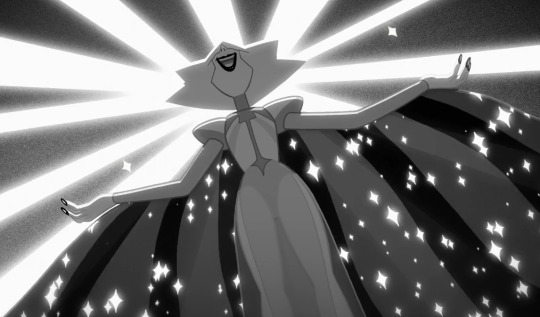
In the entirety of the original Steven Universe series, not counting the movie or SU Future, White Diamond appears in three episodes out of one hundred and sixty episodes. (Two if we don’t count White Pearl/Volleyball) That’s not even one percent of the series. In most series involving a good vs evil plot line, we usually switch perspectives between our heroes and villains to understand how they’re reacting to the events of the story. But SU is entirely told from Steven’s perspective. The audience only gets new information about gems, homeworld, Rose Quartz, etcetera, when Steven himself learns it. Because of this perspective, we don’t see the final antagonist of the series until the very end of the show.
But even though White Diamond is not present throughout the majority of the show, her homeworld subordinates and beliefs fill in the place of the hurdles that the protagonists must pass. Think about what the show is about and what lessons it teaches. Relationships are intricate and need mutual respect, being proud of who and what you are, and (most importantly) societal roles do not define you. The development of the main characters each involve acceptance of the self and bucking of what’s expected of them. Pearl fully moving on from Rose, Garnet improving her self-love, Amethyst fully accepting herself for what she is, Peridot’s disillusionment with Homeworld and growing appreciation for earth, Connie disobeying her mother’s strict rules, Steven slowly becoming someone better than even his own mother, I could go on. It’s honestly surprising, looking back, how most of the characters’ core issues stem from the lack of self-assurance and how homeworld views their flaws.
White Diamond and her Homeworld regime ultimately represent how systems put limits and stigma onto people for the sake of uniformity. The consequence of living inside your own head. A fusion cannot happen between two different gems, Pearls must be servants, Quartz gems must be big and strong, and Diamonds must be the perfect leaders. Why? Because that’s just what gems do. Because that’s how the system works. Homeworld’s status quo is one of creating an ever-expanding empire at the cost of independence, self-expression, unique lifeforms, and healthy relationships. The system can’t be wrong, White Diamond can’t be flawed, it’s how things have always been so why change what isn’t broken.
Sauron: Dominance and Corruption
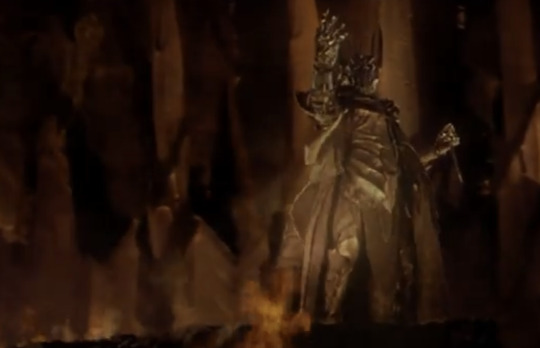
While he has more screen presence and is a much more a significant part of the story of Lord of the Rings than White Diamond is to SU, the dark lord Sauron is similarly one small part of a larger tale. Heck, he doesn’t even have dialogue in the book trilogy. Also, like White Diamond, Sauron is best represented by his many underlings. Ruthless orcs with crude but effective weaponry, colossal beasts to crush his enemies underfoot, massive armies dedicated to the dark lord’s cause of dominating all life in Midde Earth. But what’s most notable about Sauron isn’t the great power he possesses or the armies he commands, it’s the way he corrupts and deceives those that stand against him.
The betrayal of Saruman the White, the nine Nazgûl once being great kings of men who were turned into terrible ringwraiths, and most notoriously, the enticing power of the one ring. Boromir, believing that Gondor can use this evil weapon for good. Smeagol, utterly degraded into a deceitful cave dwelling throttler named Gollum. Frodo, forced to carry a heavy burden that weighs him down both physically and mentally. To Sauron, the corruption of good is a weapon he wields with unmatched lethality.
The insidious nature of his villainy is what makes Sauron the great representative of dominance and corruption that he is. The promises of more enticing good people to do evil for the “right” reasons and the ruthless conquest for dominion over all is all too real an evil to ignore.
The Martians: Colonialism and Warfare

I debated with myself on whether or not the martians from War of the Worlds should be included here. Unlike Sauron or White Diamond, the martians are clear and present throughout the story. On the other hand, there isn’t a named martian general or a big bad that’s shown to lead the alien invaders into combat. In the end, the fact that the martians are made to purely represent the darkest parts of humanity outweighs the secondary theme of this essay.
One of, if not THE first alien invasion story, War of the Worlds messaging is clear and easy to understand. The tentacled beings from Mars are coldly intelligent, remorseless, and regard our world with envious eyes. They use human blood as sustenance when they aren’t vaporizing us by the hundreds, their tripods are horrific machines of mass destruction, and their invasion is one of slaughter and destruction. But the book is quick to remind us that humanity isn’t so morally innocent compared to the martians. The consumption of our blood seems horrific, but humans have also killed animals and each other for food and resources. Their tripods are colossal and terrifying, but humanity has made countless destructive war machines. The invaders are dead set on wiping out humanity, but humanity not only brought extinction to animals like the dodo bird but to entire groups of our own kind. The martians are not simply an alien invasion to fight back against, it’s a cautious look into our worst future. A humanity that prioritizes ruthless colonization and military might is a humanity doomed to be parasitic and heartless.
War of the Worlds also takes a critical view towards solving problems through warfare. Violence is sometimes needed to fight evil, but that does make violence a good thing. The action and battles in War of the Worlds are not thrilling or glorious, they are horrific and even bumbling to an extent. Much like the early British imperials that they represent, the martians are arrogant and only win because they have the better technology. Even the destruction of a tripod has severe consequences, a flaming wreckage falling into a lake and boiling the humans hiding there alive. There is nothing pride or goodness to found in destruction and death. Warfare and violence should be the last resort of those trying to survive, yet humanity and martians brandish their weapons without care or empathy for those beneath them.
The Truth, In-Fighting, and the Seemingly Insignificant
These antagonists all represent a morally dangerous part of humanity. The stubborn refusal to change a flawed status quo, the desire to dominate and corrupt those who don’t, needless conquest and bloody war. But despite all their power and influence, these philosophies that the villains believe in fail them in the end.
For White Diamond, her ultimate failure stems from the mortal enemy of all tyrannical systems: the truth. In the last episode of Steven Universe, White Diamond removes the gemstone from our protagonist’s body. Believing that the mischievous Pink Diamond is merely hiding in this human body, White seeks to end this silly game once and for all. But once the gemstone is removed, it does form into Pink Diamond or even Rose Quartz. It forms a bright pink Steven. In the final act of Change Your Mind, White Diamond is faced with reality and all its implications. This gemstone is Steven, it’s always been Steven. This half human is not the irrational or childish person, it’s White. The leader of Homeworld, the one who’s supposed to know all and make things better, is wrong. But in order to do that, she needs to leave her own head. One of the hardest things for a person to do is admit when they’re wrong, that their foundational beliefs holding up a status quo is deeply flawed and objectively false. But accepting that you were wrong, learning from and fixing your mistakes, and becoming something better than what you were before is the greatest reward anyone genuinely looking for redemption can ask for.
For Sauron, his victory over Middle Earth comes so close. Minas Tirith has been ravaged, the army of man outside the black gates are crumbling before his might, and the ring bearer has been corrupted. However, just when all hope is burned to ash, something unexpected happens. Gollum, the epitome of the corruptive power that the one ring possesses, attacks Frodo to get back his precious. Whether it’s through struggling with Frodo like in the movie or not paying attention like in the book, Gollum falls into the fires of Mount Doom with the ring in tow. In the movies, we’re told that the eye of Sauron can pierce through cloud and stone. Because of this detail, I personally wonder what was going through the dark lord’s mind as he watched Gollum plummet to his death. The one ring’s defense, Sauron’s greatest strength, corrupting others into fighting amongst each other, was what led to his ultimate downfall. This is not the first time something like this has happened. Think back to the orcs fighting amongst themselves, or when Wormtongue stabs Saruman in the back. Not to mention that the mercy of both Frodo and Bilbo is what led to Gollum reaching Mount Doom in the first place. Even with all his armies and power, Sauron underestimated the petty infighting amongst his followers and the little acts of kindness of his enemies. Even when the forces of darkness seemingly succeed, all they’ll have left is each other to destroy. As Frodo himself said in the Two Towers book, they can’t conquer forever.
For the martians, their demise comes outwardly from nowhere. Their Tripods fall silent and they all die due to sickness. The book states that the martians either never encountered bacteria like earth’s or they had wiped out all disease on Mars. In both scenarios, the martian’s belief in their untouchable superiority over earth led their death. As soon as their invasion started, they were doomed. War of the Worlds isn’t just a hard look at what humanity could become, but also a love letter to all types of life. Bacteria, the seemingly most insignificant part of our world, is our savior here. It is so, so easy to despise germs and how they make mankind ill. But they also decompose dead flesh, helps the human body digest food, and are just as vital to our world as so many other creatures’ humanity takes for granted. All forms of life has a place in this world and to undervalue, let alone actively want to eliminate, all of it is foolhardy and black-hearted.
It’s how these stories come to an end is why I’m attracted to the idea of villains representing abhorrent philosophies. They show the inherent flaws of such morally bankrupt ideas and how their failures are inevitable. The desire for uniformity and belief that your status quo is flawless cannot stand up to the truth of the situation. Great and powerful conquerors seeking to corrupt will find themselves destroying each other when there is nothing left to dominate, while small acts of generosity and sympathy keep their opponents afloat. Arrogant war lords with their mighty machines will crumble to the things they deem to be insignificant.
#steven universe#white diamond#sauron#tolkien#lord of the rings#martians#war of the worlds#analysis#character analysis#media analysis
85 notes
·
View notes
Text
Rating Rune Factory Children
(Because I play favorites)
Rune Factory (1)
1/10
Cute but not much else to say. You have to wait a ridiculous amount of in-game time to get one short cutscene meeting your genderless nameless child (Game doesn't even bother to give them pronouns) and then never get to interact with them again. Disappointing.

Rune Factory 2
8/10
A unique idea that the series has yet to implement again, this game let you play through the second half of the game AS your child from the first half, and honestly It was a cool concept even if the gameplay got a little wonky and unbalanced near the end. The game also introduced the first female protagonist to the series, Aria (left). She and her twin Aaron (right) actually had some personality of their own and even had unique interactions with the other villagers and children of the town. Cool concept and solid designs. I just wish you could interact with them a little more as a parent before the timeskip.
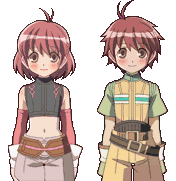
Rune Factory Frontier
7/10
I may be a little biased here, as this was my intro to Rune Factory, but I love these kids. Default names; Leif and Leona, are the first, and so far only, RF children you can interact with at multiple stages, these kids have several cutscenes documenting different milestones and are quite cute to watch. Once they reach the final stage, they don't do much besides toddle around the farm and look cute. You can gift them certain items but that's about it. Still, It's refreshing to watch your kid grow over time as apposed to the usual montage you get with RF kids.

Rune Factory 3/ Rune Factory 3 Special
3/10
They get bonus points for being the first in the series to let you have multiple kids (up to three) problem is, there's not much difference between em. The birth of each one plays about the same and while there's technically some different "personalities" it's more like each kid get a random lot of four or so unique lines of dialogue and that's it. There are also just the two sprites so if you have two or more of either gender they'll be identical, no matter the age difference. You can't gift them and they don't sleep, leave the house or even show up on the map. Honestly they're little more than cute house accessories.


Rune Factory Tides of Destiny/ Rune Factory Oceans
4/10
First off, please pardon the crappy quality. This game doesn't have traditional character portraits so it's hard to find decent quality pics. Tides of Destiny kiddos were the first in the series to inherit physical features from the player's spouse. (Pictured are Electra's daughter and Sonja's son) They appear to use the same child models as Frontier with some minor cosmetic changes but I liked Frontier's kids so no complaints there. I do wish they had real portraits and more dialogue but they're okay. At least they'll accept gifts and the events leading up to their births are quite wholesome.
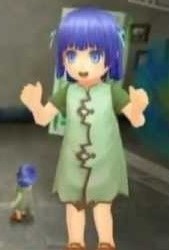
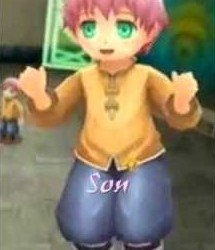
Rune Factory 4/Rune Factory 4 Special
9/10
RF4's kids are darn near perfect. Luna and Noel have identical dialogue but they have more to say than any RF kids before or possibly since. There are TONS of unique exchanges and events with them, they participate in festivals, and most interesting of all, you can equip them with gear and take them adventuring! These babies are really something special. If I had to pick one complaint, I'd say I wish they looked liiiittle more like their concept art. They look like they both got aged up a little, which isn't bad but they do look barely younger than some of their possible parents...
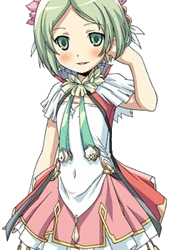
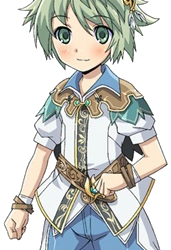
Rune Factory 5
9.5/10
Rune Factory 5's children are right up there with Noel and Luna, but they get a slight advantage when it comes to customization. Like RF3 this game lets you have up to three kids, but unlike that game, these kiddos are treated like actual characters. Depending on your choice of spouse and your answers in a particular conversation, your kids can have a variety of looks and personalities, including the fan favorite feature of inheriting hair and eye colors from the spouse, and continuing along that customization train, these babies can once again go adventuring! My one, one small gripe...It'd be nice if your eldest could grow a little by the time their siblings are born. Heck, it'd be cool if the villagers kids could grow too. I'd love to see teenaged Julian and Hina~

~~~~~~~~~~~~~~~~~~~~~~~~~~~~~~~~~~~~~~~~~~~~~~~~~~
So there's my thoughts on the Rune Factory children. I hope future installments continue the trend of more giving their kids more personality and better customization, maybe someday we'll even see kiddos inherit traits from non-human parents? How cool would that be if your kid could actually look half elf or mermaid or furry wereanimal? XD
If you agree with me (or strongly disagree) feel free to comment. Always up for discussing my favorite franchise~
#rune factory#rune factory 2#rune factory 3#rune factory 4#rune factory 5#rune factory frontier#rune factory tides of destiny#rune factory oceans#rf4 special#rf3 special#rf
302 notes
·
View notes
Text
The First Slam Dunk fansub
Proud to release my very first fansub for the return of Animation Night.
So what is this movie? The short version is that The First Slam Dunk is the best sports movie I've ever seen.
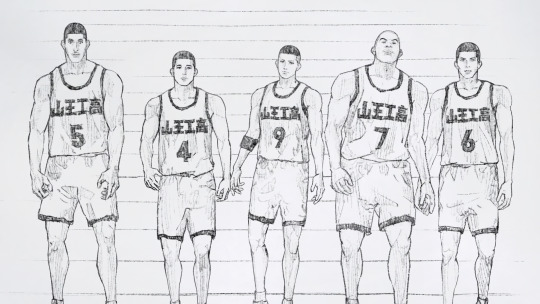
A slightly longer version: it's an incredibly intense, sharply choreographed game of basketball - intercut with the story of our boy Ryota, who struggles to live up to the shadow of his dead brother Sota, not helped by the fact that his mother is not dealing with it well. Growing up a taciturn outcast, Ryota at last finds solace in basketball, where he finds a new purpose as he and his comrades in the no-name Shohoku basketball team find their way to unexpected success. Now, he stands to achieve his brother's dream - to beat the as-yet undefeated Sannoh team. But the Sannoh boys want that win just as badly, and they live for basketball.
After seeing this movie you'll get why.
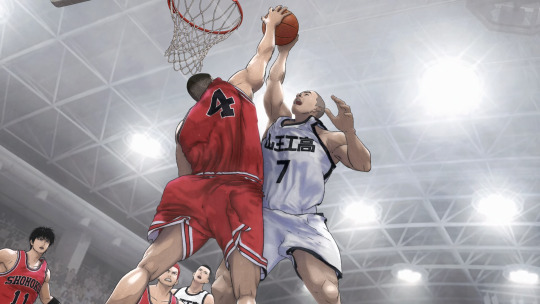
Slam Dunk is a wildly popular and long-running sports manga, previously adapted to anime by Toei in the 90s. The original story followed delinquent yankii goofball Sakuragi, who finds a new life in basketball. This movie aims to open it to a new audience - it retells the story from a different perspective, changing the emotional beats as it moves our view from goofy Sakuragi to troubled Ryota. The original mangaka Takehiko Inoue directed it after he was impressed by Toei's efforts to bring the characters to life with CG. It sports (haha) a unique look in anime, blending 2D and 3D animation with a really gorgeous manga-like shading style and effects.
The result is a film with the tight cinematography of manga panelling, the complex 3D motion of CGI and mocap, and also the clarity and snappy timing of animation. The result is, above all, readable. I honestly don't know a thing about basketball, and yet, I could follow every move - even in French.

Then add an absolutely killer soundtrack and masterful pacing and you end up with something truly special. It was one of my favourite movies at Annecy last year, and now it's finally out on BD.
So, in the interest of letting more people enjoy this movie, and also because I really wanted to try my hand at it, I made a fansub! It ended up an incredibly involved project - I retimed every line of dialogue, tracked dozens of signs in Blender, and generally went just completely all out on this one. Couple of all nighters may have been involved.
Here's some screenshots of some of the more complex typesetting:
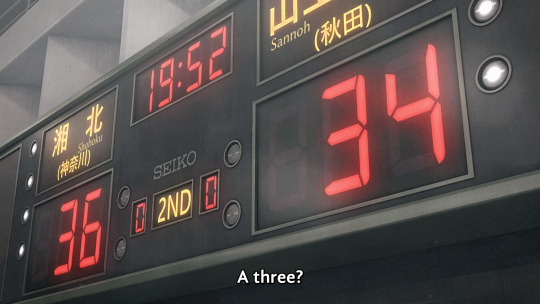
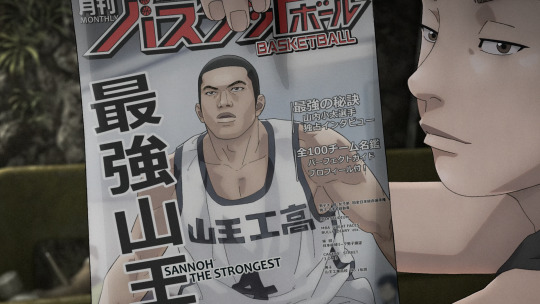




If you'd like to watch it together, I'll be staging a group watch at 7pm UK time (three and a half hours from now). Tune in to twitch.tv/canmom - I'd love to see you there! And if not, well, the torrent is above, enjoy <3
105 notes
·
View notes
Text
Favourite Hotch Centered episode

Day 11 of the #MarchHotchness event. Find the other days HERE Thank you to @hotchfiles for creating this event 💕
As always Request here! | Masterlist
I am incredibly behind. I'm sorry.
For me, a centred episode is an episode where you see character development, so my top three Hotch episodes are as follows:
4. The Tribe. It’s the first time we see Hotch butting heads with someone else. It shows us his ability to respect a person he’s in apparent competition with. We watch his attitude change and his perspective shift as he’s given new information to consider and insight into life experiences beyond his own. By the end, they’ve formed a solid bond. The episode is also just structured like a classic buddy cop comedy, and it’s endlessly amusing to me. I truly love the line where Spencer begins answering a question in the classroom and without missing a beat, Hotch calls him out like a parent/teacher. I think the episode also shows Hotch’s dedication to doing the right thing, and seeking the truth despite there being easier paths, involving money, etc. The BAU can’t be bought or manipulated. And this theme comes up a lot around Hotch.
3. L.D.S.K. I think this episode is an amazing showcase of how clever Hotch really is, and how well he can read a situation and adapt. His ability to gain favour, and create a rapport between himself and the UNSUB is impressive. He utilizes the profile and thinks quickly. He creates a game plan. We also get bits and pieces of information about the teams he was on before he joined the BAU. Also, his apologising to Spencer afterwards is precious. I love their relationship so much.
2. Pleasure Is My Business is one of my favourites because I think it showcases a lot of Hotch’s moral compass. He’s interested in justice regardless of what that means. He also has a great deal of compassion where others might not. I think a lot of his true character is on display here. Also, plot-wise I think this episode is unique compared to a lot of the others, and the whole “how am I a whore?” dialogue is brilliant. I love that whole conversation. I just like this episode point blank.
1. Omnivore has always been one of my favourite episodes, period. When I think of criminal minds I think of Omnivore. To me, it is the pinnacle of what criminal minds is. But for Hotch specifically, we see how dedicated he is, and how driven he is as well. This is the case that has haunted him for years, and little does he know at this point will continue to alter his life in ways he never could have anticipated. We see Hotch get vulnerable in conversation with Rossi, we see him for the first time unsure, and blaming himself. But, we also see his determination, and we return to his moral code. He doesn’t make deals with guys like the Reaper, even when it would make the problem “go away”.
#aaron hotchner x reader#aaron hotchner#aaron hotchner imagine#criminal minds fic#hotch x reader#marchhotchness
71 notes
·
View notes
Text
Jack Jeanne Complete Collection - Interview with Terasaki Yuka (Kisa’s Voice Actor) Translation
This short cast interview is from the Jack Jeanne Complete Collection art book!
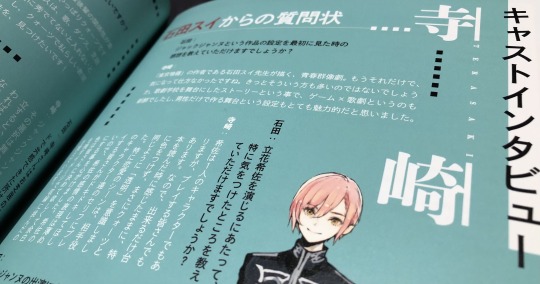
Ishida: What were your impressions when you first saw the setting of Jack Jeanne?
Terasaki: It’s a story about teenagers putting on plays together that’s drawn by the creator of Tokyo Ghoul, Ishida Sui-sensei. That information alone was all it took for me to be interested. I’m sure a lot of other people thought the same.
Since it’s a story that takes place in a theatre school, I found the way it's like a game meets theatre to be unique. I also found the aspect that the shows are put on by an all male cast to be really intriguing.
—
Ishida: When you were voicing Tachibana Kisa, were there any aspects of your performance that you had to be careful about?
Terasaki: Kisa is a character herself, but she is also the stand in for everyone that’s playing the game. That’s why I stuck to the initial impression of the script as much as possible without adding too much of my own flair. I wanted her to be ‘transparent’ like Quartz.
In the romantic scenes especially, I want the player to have their heart racing over what Kisa’s love interest is saying and focus on them. So during those scenes I made sure to act out Kisa’s emotions more subtly. I’d like for those playing to be able to decide their own colours for Kisa, so I left some of her canvas blank. I remember I would go into the recording sessions keeping that in mind.
—
Ishida: Were there any particular challenges you faced while working on Jack Jeanne?
Terasaki: The singing. When I first listened to the songs with the temporary vocals I was like ‘I’m going to be singing this!?’ and my anxiety quickly turned into terror! I had to reconstruct the way I’d been singing up until then from scratch. It was very difficult and I was unsure about a lot of things, but now thanks to Jack Jeanne I love singing even more than I did before.
—
Ishida: Other than Kisa, are there any other characters that are your favourite or that you took a liking to?
Terasaki: Tachibana Tsuki… He’s Kisa’s older brother, but there’s still a lot of unsolved mysteries surrounding him. I can’t help but be curious about him. I’d love to read a novel or something about Tsuki-nii when he was a student at Univeil. I’d like to see Fumi-san and the other third years when they weren’t upperclassmen too.
—
Ishida: Quartz, Onyx, Rhodonite, Amber. If you were to enrol at Univeil, which class would you like to be assigned to?
Terasaki: The relationships between the seniors and juniors are wonderful in every class, however I think I’d have to pick Quartz. Since I don’t think you can join the other three unless you’re already particularly skilled at singing, dancing or acting. So I’d like to find my own way to express my individuality in Quartz!
—
Ishida: You have some experience with stage acting, so were there any scenes or moments in the game that you could relate to?
Terasaki: Jack Jeanne has a lot of different choices and branches in the story. You can choose different lines to say during the plays too, but no matter which one you choose the show will still reach its conclusion. If another actor changes something then you have to change with them, and if you change something, then they have to change with you. Even though every performance of a show is supposed to have the same programme and script and movements, you go into it with a fresh mind each day and there are slight differences between the shows.
There are things you sometimes only realise on opening day when you see the audience walking in, so I could relate to the sense of tension actually putting on a show brings. I’d love for the players to see how each character's dialogue changes with each option, so please play through the shows multiple times!
—
Ishida: Every show in the game is quite different thematically, which one (setting, musical composition, etc) did you like best? Also, were there any shows that you’d like to try starring in in real life?
Terasaki: All of the shows are very different and I love all of them, but the one that I felt the most accomplished and happily tired after was the autumn performance. During auditions, the selection of lines from it were full of passion and tension, so I remember being excited to record for the autumn performance.
As for which one I’d like to try in real life, it would be Sissia of the Central Nation. When I recorded my lines for the whole show in one session, I started arranging how the stage set would look like in my mind. I’d think ‘this line would definitely be delivered from the top of the set, and this line would be said from the audience to the stage’. I’d read the lines whilst imagining what the show would look like and the performance that I could picture the clearest was Sissia of the Central Nation. So I ended up really wishing I could see it in person.
64 notes
·
View notes
Text
Caelwynn's Mod List for Stardew 1.6.9+ - Expansions/NPCS
Last Updated: 11/26/24
Stardew Valley Expanded — expands upon the original world of Stardew by adding dialogue and gift taste changes to original NPCs, adding six new marriage candidates, nine additional NPCs, and an entire new area to explore.
Ridgeside Village — another expansion, this time bringing an entirely new village with several maps to life, connected to the valley by a cable car north of the bus stop. Ridgeside has fourteen new marriage candidates available from the get-go, plus an additional thirty-two NPCs.
East Scarp — adds a hamlet to the east of Pelican Town. It is a far more modular expansion; while more than a dozen NPCs come with East Scarp, at thirty more are available through various add-on mods. The East Scarp page on Nexus lists characters available on Nexus, while more can be found in an alpha or beta stage on the East Scarp Discord.
Always Raining in the Valley — adds Sterling, Mia, and Henry to East Scarp
Sword & Sorcery — Adds NPCs Mateo (originally from Never Ending Adventures), Hector (originally from Circle of Thorns), Cirrus, Roslin, and Dandelion. Mateo, Hector, and Cirrus are romanceable. Also adds a ton of additional content, including various skills/classes, a new 30-floor dungeon, challenging monsters with a boss fight, plus tons of additional content..
Mr. Ginger — expands upon the story of Jas's cat, Mr. Ginger, who's introduced in The Ranch Expansion (Marnie & Jas).
Juliet & Jessie — adds a pair of new clerks to Joja-mart. Both Juliet and Jessie have connections with East Scarp.
Alecto — gives the wizard's ex-wife a story of her own.
The Last Smoluanu - A Dwarf Expansion — adds additional heart events and dialogue for the dwarf, including allowing you to invite him onto the farm as a roommate.
Jasper — adds Jasper as a marriageable NPC.
Creative Differences (Rodney O'Brien) — adds Rodney O'Brien as an NPC living in East Scarp.
Jorts and Jean the Helper Cats — adds two cat NPCs and their attempts to unionize the workers at Joja-mart.
Lavril — adds Lavril, originally of King's Raid, as an NPC in East Scarp.
Lurking in the Dark (Sen) — adds Sen, a Shadow Folk NPC, to East Scarp.
Nora the Herpetologist — adds Nora as an NPC living in East Scarp.
Distant Lands - Witch Swamp Overhaul — expands upon the goblin guarding the witch's hut, as well as that entire area.
Immersive Family — adds 35 new events plus additional dialogue about the farmer's children. It includes content for SVE, RSV, ES, and other mods.
Unique Children Talk — adds dialogue for the farmer's children.
Immersive Unique Children Talk — adds dialogue to Unique Children Talk for the farmer's children with references to the farmer's spouse, vanilla NPCs, and modded NPCs.
Stardew Kids Expansion — adds five new child NPCs, each of which are relations to vanilla NPCs.
Jade — adds another marriage candidate, this time an entomologist.
Ridgeside Dialogue Expansion — adds additional lines of dialogue and mail to Ridgeside Village.
A Pelican Town — adds Kenzie and Thompson to Pelican Town. Thompson is marriageable, while Kenzie is not.
Lucikiel - SVE Compatibility — adds a demon, Lucikiel (originally from King's Raid) to the game and makes him compatible with SVE. He can be married.
Visit Mount Vapius — adds a new map/village with new NPCS, seeds, forageables, recipes, and more!
Pride in the Valley — adds a Pride Festival plus additional dialogue, events, mail, and quests.
Coal Point Farm — adds a farm north of the farmer's with three new NPCs, some new fish, and new locations.
Adventurer's Guild Expanded for 1.6 — adds two new romanceable NPCs plus a couple of others, several new quest lines, and expands on the backstory of Marlon.
Ayeisha the Postal Worker — adds an NPC who delivers mail around the valley.
Elian — adds a different demon to the Crimson Badlands (and thus requires SVE). Also can be romanced.
Passerby Cemetery — adds a whole new area to the mountains, plus five NPCs, new animals, new crops, new recipes, and more. Now has content from A New Dream added in.
Tristan — adds a new NPC to East Scarp, but requires Mr. Ginger, Ranch Expansion Pack, in addition to East Scarp.
Defense Division — Adds NPCs Edward, Miranda, and Isis, members of the Adventurer's Guild Defense Division.
A Pelican Town — Adds two new NPCs, Thompson (romanceable) and Kenzie.
The Masterpost for all of the mods is located here.
#caelwynn's mod list#stardew valley#sdv#stardew valley mods#stardew mods#sdv mods#modded stardew valley#stardew 1.6#stardew expansions#stardew npcs
52 notes
·
View notes
Text
The French New Wave: A Cinematic Revolution.
Introduction
The French New Wave, or Nouvelle Vague, is a cinematic movement that revolutionized French cinema and, by extension, global cinema. Emerging in the late 1950s, it marked a decisive break from the conventions of traditional filmmaking. This movement not only redefined the rules of directing but also spotlighted new talents who would go on to influence generations of filmmakers.

Origins of the French New Wave
The movement was born out of criticism, particularly through journals like Cahiers du cinéma, where young cinephiles such as François Truffaut, Jean-Luc Godard, and Éric Rohmer began expressing their dissatisfaction with the rigidity of French cinema at the time. These critics soon transitioned behind the camera to materialize their innovative ideas.
Characteristics of the French New Wave
- Narrative Freedom : Films of the New Wave are characterized by non-linear storytelling and a liberated approach to narrative structure. Plot often takes a back seat, with emphasis placed on emotion and the moment.
- On-location Filming : Unlike traditional cinema, which predominantly relied on studio settings, New Wave directors favored natural locations, lending their films a more realistic and immediate feel.
- Innovative Camera Techniques : The directors experimented with groundbreaking camera techniques such as handheld shots, long takes, and rapid editing. This dynamic approach contributed to a unique aesthetic that often blurred the lines between fiction and documentary.
- Non-professional Actors and Improvised Dialogues : To enhance realism, many New Wave filmmakers cast non-professional actors and encouraged improvisation, resulting in more natural and spontaneous dialogue.

Pioneering Figures
- Jean-Luc Godard : With films like Breathless (À bout de souffle, 1960), Godard introduced a bold and provocative style, challenging conventional editing and narrative techniques.
- François Truffaut : In The 400 Blows (Les 400 Coups, 1959), Truffaut explored autobiographical themes with a new sensibility, deeply resonating with audiences.
- Agnès Varda : Although sometimes considered on the periphery of the movement, Varda contributed significantly with works like Cléo from 5 to 7 (Cléo de 5 à 7, 1962), enriching the New Wave with a feminine and introspective perspective.



Three Must-See Films of the French New Wave
1. Breathless (1960) - Jean-Luc Godard
One of the cornerstones of the French New Wave, Breathless tells the story of Michel Poiccard, a petty criminal on the run, and his love for a young American, Patricia. The film is renowned for its innovative editing style, with abrupt cuts and a frenetic pace. Godard disrupted traditional cinematic conventions, delivering a daring work that perfectly embodies the rebellious spirit of the movement.

2. The 400 Blows (1959) - François Truffaut
Truffaut’s debut feature is an autobiographical masterpiece that follows the misadventures of Antoine Doinel, a young boy rebelling against authority. The 400 Blows is a poignant film that explores childhood, the misunderstanding of adults, and the quest for freedom. The film is distinguished by its realism and sensitivity, hallmarks of the New Wave.

3. Cléo from 5 to 7 (1962) - Agnès Varda
Often referred to as the "grandmother" of the New Wave, Agnès Varda offers an introspective and feminist perspective with Cléo from 5 to 7. The film follows Cléo, a singer awaiting potentially grave medical test results. Over the course of two hours, we watch her traverse Paris, encountering various characters. The film is remarkable for its exploration of time, mortality, and identity, while also capturing the essence of Parisian life.

The Impact of the French New Wave
The French New Wave profoundly influenced global cinema, paving the way for a new generation of directors willing to break conventions, both in Europe and in the United States. Filmmakers like Martin Scorsese, Quentin Tarantino, and Wong Kar-wai have frequently cited the New Wave as a major source of inspiration.
Conclusion
The French New Wave remains a pivotal movement in the history of cinema. By breaking with tradition and innovating both in form and content, these directors redefined what cinema could be. Even today, their influence is felt, proving that the New Wave has left an indelible mark on the art of filmmaking.

(yes it is)
#coquette#it girl#lana del rey#girlboss#jane birkin#lizzy grant#60s girl#lanadelrey#vintage#girlblogging#nouvelle vague#new wave#Godard#francois truffaut#jean luc godard#Agnès Varda#70s aesthetic#70s vintage#60s icons#films#movies#movie review#critique#essai#french
29 notes
·
View notes
Text
Dacre Montgomery (‘Stranger Things’) on filming his Season 4 appearance from Australia: ‘I put everything into this moment’ [Exclusive Video Interview]
Sam Eckmann TV June 17, 2023 6:30AM
“I like to do a lot of character prep and development and sort of live in character,” explains Dacre Montgomery of his acting process. The breakout “Stranger Things” star made a surprise return to the hit Netflix series in Season 4 despite his character Billy being killed in the previous season. His appearance was brief, but it provided the actor with a unique filming opportunity and the chance to put a final touch on a role that means a great deal to him. “It’s a culmination of hundreds of hours of work and really living in character in many ways,” says Montgomery. Watch the exclusive video interview above.
The Duffer Brothers called Montgomery near the start of the global pandemic with the offer to return for some pivotal scenes with Max (Sadie Sink). “And then it became quite difficult to leave Australia,” says the actor, noting that he was stuck in his home country while the series was being filmed in Albuquerque, New Mexico.
Montgomery recorded lines of dialogue for Sink to work with as she filmed in the U.S., but it became too difficult a prospect for him to join her. To his surprise, production agreed to shoot his material in Perth. “They decided to shoot the scenes in my hometown, but a sound stage of the size that they needed, with a blue screen stage, didn’t exist. So they built one just for the one scene in Western Australia, which was awesome,” he admits. The costumes, wigs, and prosthetics for Billy were flown in from across the globe, and the actor worked with a local Australian team to put it all together.
“But the strangest part of it all was I was on a blue stage,” he admits. He had a tiny earpiece playing Sink’s lines for him, but he otherwise only had a tennis ball to act opposite. The performer describes the process as “highly emotional work,” not only because of the content of the scenes, but because of his deep attachment to his character. So despite the strange circumstances, filming by himself while in and out of hotel quarantine, Montgomery “put everything into this moment.”
Because of his isolation in Oz, Montgomery reveals that he had “no real context obviously of what was happening in the rest of the season.” This includes the setup that the villain Vecna (Jamie Campbell Bower) produces an illusion of Billy as a representation of Max’s grief, and as a way to lure her into accepting death. But Montgomery had no designs on portraying a new version of the character. “I really just wanted to play Billy for Billy, and give the sort of authenticity of the character work in that space,” he explains, “There’s so much core memory there of Billy and who he is. So this sort of materialization of him, it was important for me to play the character properly rather than trying to be an offshoot.”
Viewers may also describe Billy as a villain, but Montgomery is drawn to the discovery of what lurks beneath the surface of this kind of figure. “There’s this sort of truth in a weird sick way in the mask,” he explains, “These antagonists, or perceived antagonists, are trying to cover up deep trauma. So obviously that they wear this mask that’s outwardly facing.” During his time on “Stranger Things,” he enjoyed exploring what made Billy put on his mask in order to humanize the character. Montgomery had to mine his own personal fears and demons in order to tap into this facet of Billy. That process is scary, but also cathartic. “I think working with Billy, there was three or four years, however long I was involved with the show, of catharsis,” states Montgomery.
177 notes
·
View notes